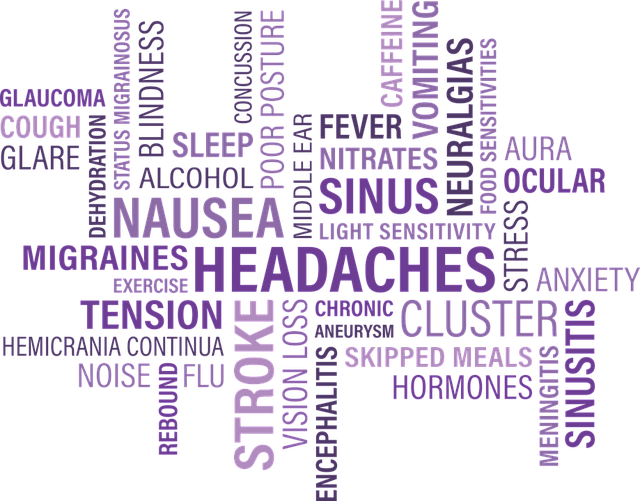A headache can be very painful and is often mistaken for migraine by those who have never experienced the latter. It is difficult to tell if the pain you feel in your head is a typical headache or something worse. But those who experience migraines usually say that until they had their first one, they did not realize how severe the pain could be. They say that having experienced a migraine they would never mistake a typical headache for one again.
The Difference Between a Headache and a Migraine
A headache and a migraine are both types of pain in the head, but they are different conditions. A headache is a common and often minor discomfort that most people experience at some point in their lives. Headaches can be caused by various factors, such as stress, lack of sleep, hunger, and dehydration.
A migraine, on the other hand, is a more severe type of headache that is accompanied by additional symptoms. Migraines are often described as throbbing or pulsing pain on one side of the head and can last for several hours or even days. In addition to the headache, people with migraines may also experience symptoms such as sensitivity to light and sound, nausea, and vomiting. Some people may also experience an “aura” before a migraine, which can include visual disturbances or tingle in the face or hands.
The exact cause of migraines is not fully understood, but it is believed to involve changes in brain chemistry and the blood vessels in the brain. Triggers for migraines can include stress, changes in sleep patterns, certain foods, and hormonal changes in women.
In summary, the main difference between a headache and a migraine is the severity and accompanying symptoms. While both can cause head pain, migraines are typically more severe and are accompanied by additional symptoms such as sensitivity to light and sound, nausea, and vomiting. If you experience frequent or severe headaches, it is important to speak with your doctor to determine the underlying cause and appropriate treatment.
What Does a Headache Feel Like?
A headache is, as the name suggests, an ache in the head. Sometimes it feels like pressure with a dull ache while at other times the pain might be described as a stabbing pain. Headaches can be mild, moderate, or severe and can occur at the front, sides, or back of the head. Most headaches will respond positively to over-the-counter painkillers such as acetaminophen.

There are a number of different types of headaches, including tension headaches that tend to come with a pressure in the head; cluster headaches, which cause recurrent headaches for days or weeks; and sinus headaches, which are usually caused by a sinus infection and are accompanied with other symptoms, including facial pressure, stuffy nose, and congestion.
A headache is also a common symptom of other conditions, including:
- meningitis
- encephalitis
- brain tumor
- aneurysm
- head trauma
- seizures
- strokes
- sleep disorders.
What Does a Migraine Feel Like?
Although most people assume that a migraine is just a severe headache, the pain in the head is actually just one symptom of migraine, which is a neurological disease. The headache associated with migraine can be moderate to severe but is usually accompanied by other symptoms, such as:
- sensitivity to light
- dizziness
- nausea
- vomiting
- muscle aches
- neck stiffness
- diarrhea or constipation
- mood changes
- fatigue
- loss of appetite
- blurred vision.
A migraine attack can be debilitating, and the pain can often be so severe that it sends people to the E.R. The pain is usually located on one side of the head but sometimes it can affect both sides. The symptoms of a migraine often prevent people from going about their daily life and can be triggered by several different factors. There is no single cause of migraine, but the triggers can include:
- hormonal changes
- allergies
- family history
- stress
- lack of sleep
- alcohol consumption
- changes in altitude
- skipping meals
- emotional anxiety
- excess caffeine.
How are Headaches and Migraines Treated?
As mentioned, a headache will usually go away by itself or with the help of an over-the-counter medication. These medications can sometimes be helpful for the symptoms of migraine, but those who have regular migraine attacks might be given prescription medication to prevent future attacks or to lessen the symptoms when they occur.

Some people who experience migraines regularly may be referred to pain management physicians who will spend time working with them to identify the main triggers. According to the experts at Utah-based pain clinic KindlyMD, lifestyle changes can often be enough to prevent migraine attacks in some patients.
Pain management doctors work with patients to see if there are any foods that seem to be triggering attacks and may advise limiting or avoiding these to see if that makes a difference. The patient might also be advised to implement relaxation techniques such as yoga, Pilates, or meditation to help reduce stress (if this is deemed to be the main trigger).
To conclude, there is a big difference between a headache and a migraine in how they feel and how they are treated. If you are experiencing regular migraine attacks, it might be worth visiting a pain management doctor for advice.
